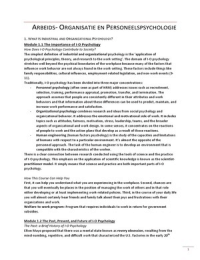Summary
Complete summary AOP
- Course
- Institution
- Book
Summary study book Work in the 21st century: An introduction to Industrial and Organizational Psychology of Landy, F.J. & Conte, J.M. - ISBN: 9781118291207, Edition: 4e druk, Year of publication: 2013
[Show more]








